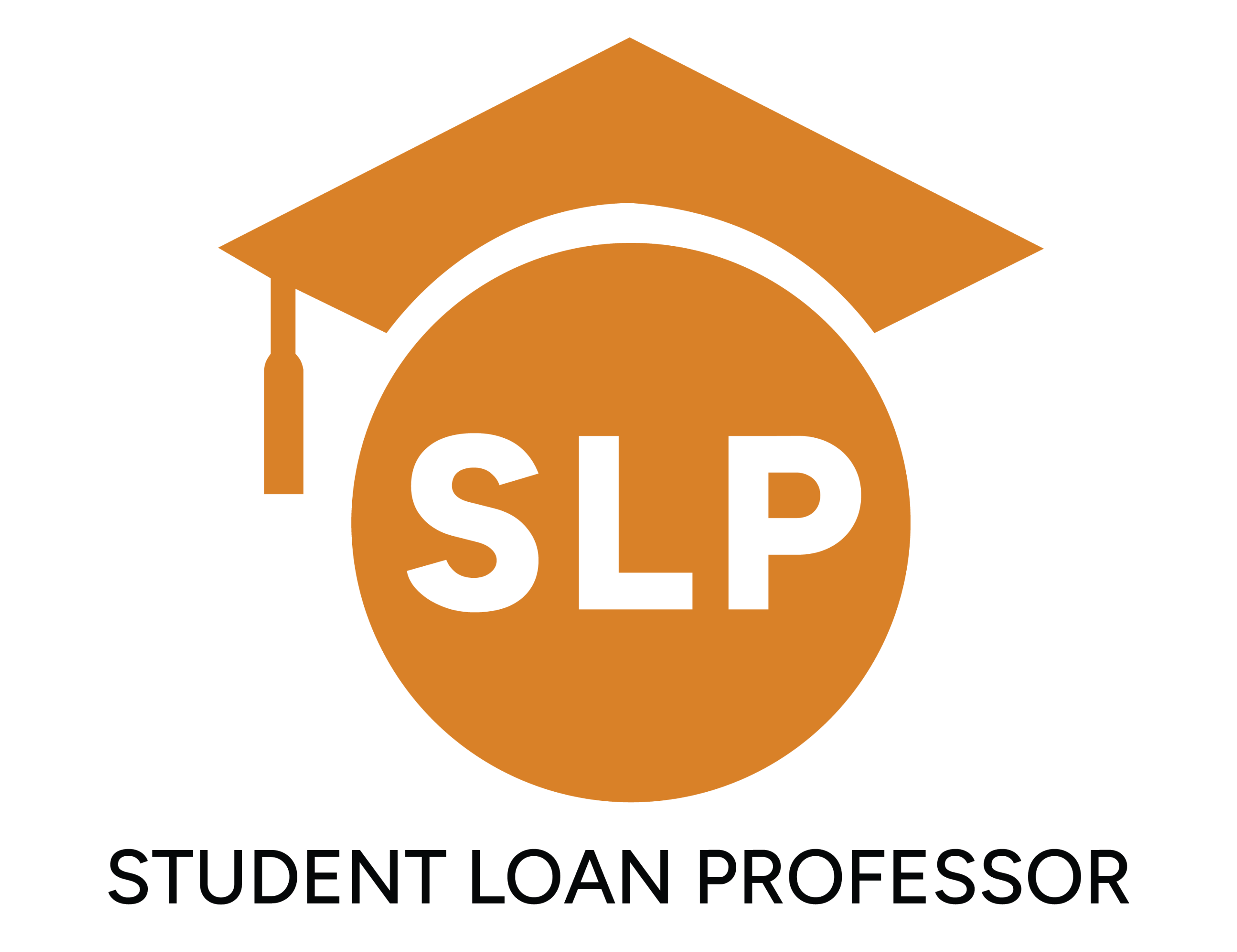Key Takeaways
- Improving your credit score and debt-to-income ratio will help you secure better loan rates.
- Federal interest rates, inflation, and market stability can determine when to refinance your loan.
- Refinancing can save you money but also lose you access to federal benefits and protections.
- Consult a professional for expert insights and help finding and securing the best student loan refinance rates.
Student loan refinancing is a powerful tool for reducing monthly payments, lowering overall interest costs, and gaining greater control over your financial future.
However, finding the best refinance terms for your financial situation might be more complex than you expect. Today, we take a deep dive into student loan refinance rates, from how they work to the different factors that influence them.
We’ll also explore recent trends influencing how lenders determine rates and provide tips to help you secure the best rates for your refinancing goals.
Whether you’re a recent graduate or simply looking to save more on your loan costs, come along and learn how refinancing can help you achieve financial flexibility and save you thousands over the life of your loan.
What is Student Loan Refinancing?
Refinancing refers to the process of replacing existing student loans with new loans that offer more favorable terms and, ideally, a lower interest rate.
Typically, when you refinance your federal or private student loans, your lender will pay off your current debt and issue you with a new loan, allowing you to consolidate multiple loans into one monthly payment.
This greatly simplifies your repayment process and can save you money over time, especially if your new loan carries a lower interest rate. As such, refinancing is one of the top strategies for reducing monthly bills, shortening or extending loan terms, and achieving better interest rates.
However, before you refinance your student loans, you should weigh the pros and cons to ensure it’s the right move for you.
The Pros of Refinancing
- Lower Monthly Payments: Refinancing can help lower your interest rates or extend your loan term. This will reduce your monthly loan bills, freeing you to focus on other financial priorities.
- Reduced Interest Costs: Securing lower interest rates through refinancing will save you thousands of dollars on your student loans, especially if you opt for a shorter repayment term.
- Simplified Loan Management: Consolidating multiple student loans into one when refinancing will streamline your monthly payments and loan management.
The Cons of Refinancing
- Loss of Federal Loan Benefits: Refinancing will cost federal student loan borrowers access to protections like Income-Driven Repayment (IDR) plans, Public Service Loan Forgiveness (PSLF), and deferment or forbearance options.
- Healthy Credit and Income Requirements: You need credit approval to refinance student loans. If you have a lackluster financial history or a high debt-to-income (DTI) ratio, you may find it difficult to qualify for refinancing or only access high interest rates if you do.
- Not Ideal for Everyone: Refinancing generally works for borrowers with strong credit, a stable income, and goals centered around saving on interest.
How Refinance Rates Impact Your Student Loan Costs
Refinance rates directly impact the total cost of a student loan and the size of monthly payments, which is why most borrowers refinance their loans to secure lower interest rates.
A lower interest rate will save you a significant amount over the life of your loan. This is true even with a slight drop in your initial interest rate. For example, because of the cumulative effects, a rate drop, say from 7% to 4%, could save you thousands over the life of your loan.
But to make the most of your loan refinance, you must understand how student loan refinancing rates work and their impact on your loan payments. To that end, here are some of the key interactions between refinance rates and your loan.
Refinance Rates vs. Monthly Payments
Securing lower interest rates when refinancing student loans will reduce your monthly payment, freeing up your budget for other expenses and financial goals.
For example, let’s say you have a $30,000 loan with a 7% interest rate over a 10-year loan term. Refinancing at a 4% interest rate would reduce your monthly payment by about $50-$100 — a significant saving over your repayment term.
Refinance Rates vs. the Total Cost of Your Loan
A high interest rate on your loan means that a significant portion of your monthly payment goes towards paying off the interest rather than the principal, thereby increasing the overall cost of your loan.
Securing a lower interest rate means lower monthly payments and, ultimately, a lower overall cost for your student loan repayment. Consider this as an example, refinancing a $50,000 loan from 7% to 4% over ten years could save you about $8,500 in interest costs alone.
Fixed Interest Rate vs. Variable Interest Rate
As you’re considering your refinancing options, you will likely come across fixed and variable interest rates. Here’s what to expect with each option and the impacts they will have on your loan.
- Fixed Rate Loans: Here, the interest rates remain the same over the life of your loan. As such, loans with fixed rates provide predictable monthly payments and are ideal for borrowers who prefer stability and longer repayment terms.
Typically, only borrowers with strong credit can access loans with lower fixed rates.
- Variable Rate Loans: Here, loans typically start off with lower interest rates that fluctuate over time based on market conditions. The lower initial rates can offer some savings over time, but this comes at the risk of higher rates capped at a specified maximum.
As such, loans with variable interest rates are better suited to borrowers who plan to pay off their student loan debt quickly and can manage possible rate increases.
Understanding the significant impact refinancing can have on loan costs will allow you to assess your options better and make the best financial decisions.
However, if you need assistance determining whether refinancing is a suitable option, contact Student Loan Professor for a free suitability analysis by a team of experts.
Understanding Trends Influencing Student Loan Refinance Rates
Student loan refinance rates vary based on several economic and market factors. Understanding these factors and resulting trends will help you make better-informed financial decisions. Some of these key factors include:
- Federal Interest Rates: The Federal Reserve sets the federal fund rate, which student loan lenders use to determine interest rates. An increase in the federal fund rate directly influences the cost of borrowing, leading to more expensive student loans.
Conversely, when the Fed lowers its rates, interest rates tend to decrease, making refinancing education loans a more attractive prospect for many borrowers.
- Inflation Levels: During periods of high inflation, lenders tend to increase their interest rates to offset their risks and protect their profit margins. As such, higher inflation usually results in more expensive loans.
This dynamic is especially relevant now, as inflation rates have risen in recent years, prompting the Federal Reserve Bank to increase its rates in response.
- Economic Uncertainty: Lenders tend to raise their rates during periods of economic uncertainty, such as a recession or rapid economic shift, to mitigate perceived risk.
During such times, lenders might experience more defaults, leading them to tighten their refinance loan criteria or increase student refinancing rates to protect their portfolios.
This makes loan refinance rates more unpredictable, with some lenders shifting focus to attracting lower-risk borrowers through stringent credit requirements.
- Consumer Demand and Borrower Profiles: Demand for refinancing can also influence the trends in refinancing rates. When more borrowers seek to refinance, often due to favorable rates and market conditions, lenders may adjust their rates to manage demand.
Most creditworthy borrowers will receive competitive rates, whereas those with lower credit scores or high debt-to-income ratios might face higher rates.
How to Secure The Best Loan Refinance Rates
Grasping loan refinance trends is just part of the equation. To secure the best rates on your loan refinance, you must take steps to boost your borrower profile. Here are some practical strategies you can employ to optimize your refinancing loan offer:
1. Improve Your Credit Score
- Check your credit report: Review your credit history and dispute any errors. Correcting any inaccuracies on your credit report can immediately improve your score.
- Reduce existing debt: Paying off or reducing your existing debt, especially your credit card balance, will improve your credit utilization ratio, positively impacting your score.
- Pay debts on time: Consistently paying all your bills on time will build your credit profile and show lenders that you’re a low-risk borrower.
2. Consider Getting a Cosigner
- Choose a qualified cosigner: If your credit or income isn’t optimal, adding a cosigner with a high credit score and stable income will help you qualify for better rates.
- Get a cosigner release option: Look for lenders that offer a cosigner release option. This will allow you to remove your cosigner from your loan after meeting a predetermined payment or credit criteria, giving you and your cosigner more flexibility in the future.
3. Choose the Right Loan and Rate Type
- Get a shorter loan term if possible: Shorter terms typically come with lower interest rates, though your monthly bills will be higher. If you can manage the higher monthly payments, a shorter term will save you money in interest costs.
- Evaluate fixed and variable rates: If you prefer payment stability, fixed-rate loans are a safer option, though they may be more expensive than variable-rate loans initially.
But if you are okay with potential rate fluctuations, variable-rate loans will offer you more short-term savings, especially if you intend to pay off the loan quickly.
4. Shop Around and Compare Rates
- Use online comparison tools: Use online comparison tools to view rate offers from multiple lenders side by side, helping you determine which might be the best fit for your needs. Additionally, you can connect with top student loan providers recommended by Student Loan Professor.
- Request prequalification: Many lenders offer a pre-qualification option with a soft credit pull, allowing you to see potential rates without impacting your credit score. Take advantage of this to compare offers and identify the best options before submitting your student loan refinance application.
Frequently Asked Questions
How Often Do Student Loan Refinance Rates Change?
Refinance rates change frequently, sometimes even daily, based on market conditions and factors such as the federal funds rate. To keep informed, regularly check rates or set up rate alerts with lenders.
Can You Refinance Both Private and Federal Student Loans Together?
Yes, many lenders allow you to refinance federal and private loans into a single new loan. However, refinancing federal student loans means you’ll lose access to protections and benefits such as IDR plans, student loan forgiveness, deferment, and forbearance.
Can I Refinance Student Loans More Than Once?
Yes, you can refinance your loans multiple times to take advantage of significant rate drops or when you qualify for better terms because of an improved credit score or income. However, consider the origination fees to ensure the move results in savings.
Make an Informed Decision on Your Student Loan Refinancing
Refinancing your student loans can be a strategic way to reduce your interest rate, lower your monthly payments, and save money over time.
However, to make the most of your loan refinance, you must evaluate the market and your unique situation so you can make an informed decision.
While you can choose to take this on by yourself, you’ll find the process much smoother with an expert team, such as Student Loan Professor (SLP), by your side.
At SLP, we’re a full-service student loan advisory company and experts in the education refinance loan marketplace. We offer various services, including personalized counseling to save you money and secure your financial future.
Get in touch today for help finding and securing the best student loan refinance rates.
Brandon Barfield is the President and Co-Founder of Student Loan Professor, and is nationally known as student loan expert for graduate health professions. Since 2011, Brandon has given hundreds of loan repayment presentations for schools, hospitals, and medical conferences across the country. With his diverse background in financial aid, financial planning and student loan advisory, Brandon has a broad understanding of the intricacies surrounding student loans, loan repayment strategies, and how they should be considered when graduates make other financial decisions.





